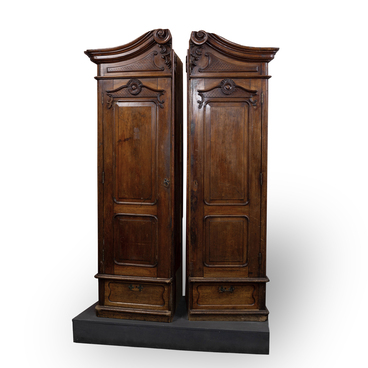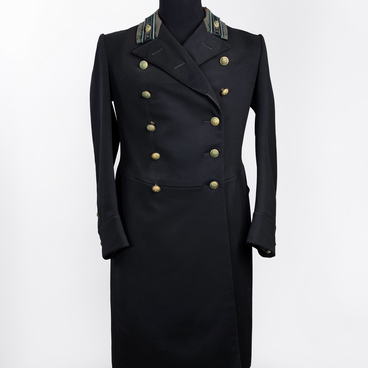The exhibition of the Vladimir Arseniev Museum of Far East History features paired fragments of openwork cast iron lattice in the form of a circle with the monograms “K” and “A”, which were placed on the gate doors leading to the trading house “Kunst and Albers” — the first foreign firm in the Far East of the Russian Empire. The firm was founded in 1864 and existed for more than 60 years, until the 1930s.
Monograms immortalized the names of the founders of the trading house — Germans Gustav Kunst and Gustav Albers. The merchants met in Shanghai in 1864 and exchanged views on the prospects of trade in the Russian Far East, where the port-franco regime was in force. The companions chose Vladivostok, a new port city, as the place for the enterprise development. The newly established company was engaged in the sale of essential goods, expanding the sphere of services to meet the demand. Besides the main office for wholesale and retail trade, the firm opened a number of other offices: commission and transportation, banker’s office, and technical bureau. It gradually expanded its influence over the whole Far East with its branches established in Nikolsk-Ussuriysk, Khabarovsk, Blagoveshchensk, Posyet, Slavyanka. In large Far Eastern cities, the Kunst & Albers partnership focused mainly on serving the well-to-do population — officers and civil servants — and opened its department stores in appropriate locations, designating them as areas of “prestigious consumption”.
The first company store in
Vladivostok was opened in Gustav Albers’ own house. And in 1884, at the corner
of Svetlanskaya and Suifunskaya streets, a luxurious stone building was erected
for the needs of the store. In 1899–1900 it was extended with an annex on the
northern side, in 1906–1907 it was rebuilt, and a new three-story building,
which adorns the city to this day, rose on the former place. The department
store was designed and built by the architect Yunghendel and the engineer
Ioganson. The new store was built on the foundations and partial walls of the
old building. It was designed in the Romantic Art Nouveau style, combining
elements of Far Eastern and European Art Nouveau, medieval Germanic
architecture, Baroque, European and Asian motifs. The fragments of the cast-iron
lattice of the gate of the trading house “Kunst and Albers” are part of the
decoration of this building. They were transferred to the museum’s collection
in 1963 and have taken a respectable place in the collection of urban
decorations.



